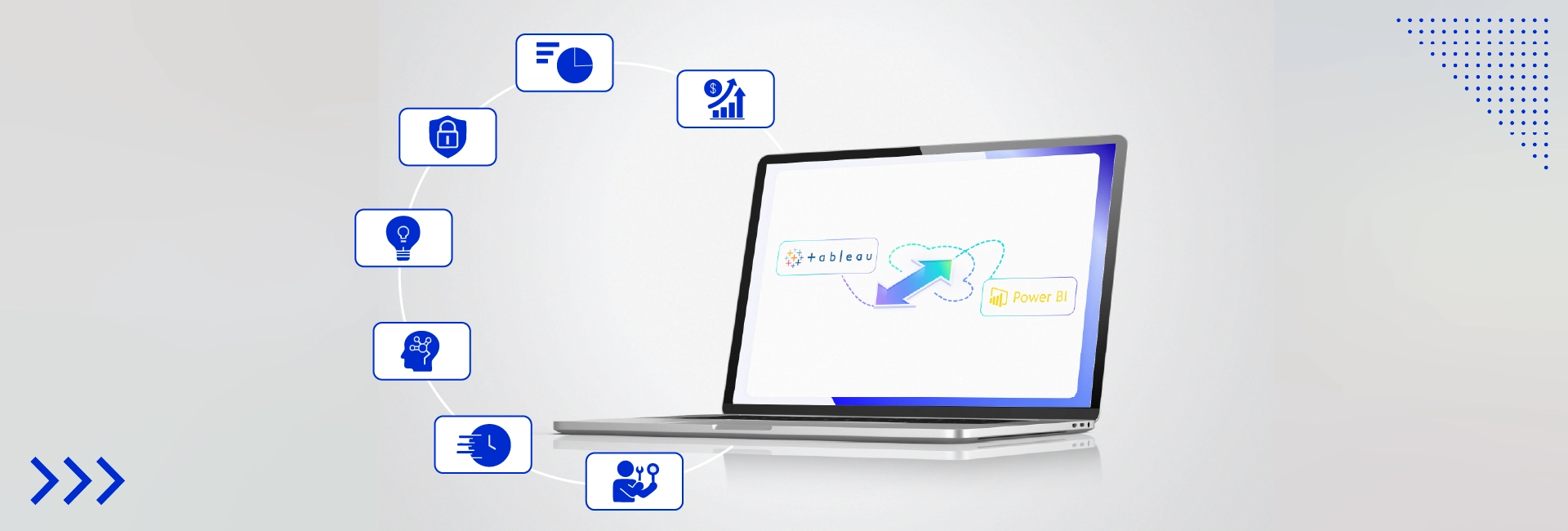Have you ever noticed a child interacting with its surroundings for the first time? When the mother points towards a round red object and calls it an 'Apple,' the child associates the visuals with terms used and keeps them as a reference for 'Apple' in the future.
That's what happens when training AI and machine learning models through data annotation. Data annotation is tagging or labeling different components within the datasets to provide context and meaning, making the information understandable to machines.
That means the performance of AI models depends on the quality of data annotation, which is influenced by the accuracy and completeness of the datasets.
However, preserving dataset accuracy is an uphill battle, given the vast data generated daily. According to Statista, 64.2 zettabytes of data were produced in 2020. By 2025, this number will grow to more than 180 zettabytes.
But, as the saying goes, every problem has a solution.
And this blog is dedicated to figuring out those solutions. In this, we will delve deeper into the world of data annotation, exploring:
- Why accuracy and completeness in data annotation is important
- What steps can be taken to evaluate and control the accuracy of data annotation
- How AI-driven organizations can improve the accuracy and completeness of data annotation
Let's begin
Fast is fine, but AI model accuracy and completeness is the final
Data accuracy and completeness in datasets should be given extra attention because AI models are only as good as the data they process. They depend heavily on the quality of datasets to analyze patterns and draw conclusions.
That said, AI models trained on inaccurate, or incomplete don't deliver desirable results. This is because no matter how advanced AI and machine learning are, they can never detect and rectify the underlying dataset issues. It is mostly like garbage in—garbage out.
Let's understand how.
Suppose a lifestyle brand wants to launch a smartwatch. To this end, it decided to use an AI tool to analyze its existing customer database and segment the audience for a targeted marketing campaign.
- Age entries incorrectly list a 45-year-old as 25 years old
- Customers have moved, but their addresses remain outdated in the database
- There are gaps or errors in purchase history records
- Demographic and behavioral data affected by inaccuracy and inconsistency
Due to flawed inputs, the AI tool misinterpreted the patterns and insights, leading to:
- Poorly targeted campaigns and irrelevant recommendations
- Misidentified trends and preferences
- Negative brand perception
- Inefficient spending and lower overall ROI
- waste of marketing efforts and resources
Thus, dataset errors can severely impact the performance of advanced tools, resulting in technical, financial, and strategic losses to companies. To extract the maximum out of AI and other machine-learning platforms, organizations must pay special attention to accuracy and completeness.
Let’s see how we can evaluate and control accuracy and completeness in data annotation.
What gets measured, gets accomplished in data labeling
One of the most effective methods we can employ to evaluate the accuracy is the Inter-Annotator Agreement (IAA). IAA is a procedure that measures how similarly different annotators, individuals, or systems are labeling the same datasets. Apart from ensuring consistency, IAA also identifies any gaps in the annotation guidelines, improving the overall data quality.
Moreover, depending on the type and nature of annotation, there are several metrics used to estimate IAA. Here are four of the most important ones:
Cohen's Kappa
It calculates the level of agreement between two annotators expected to interpret the dataset similarly. To do so, it considers the observed agreement and compares it to the agreement that would happen if annotators were just guessing randomly.
For example, you are training an AI model on image classification. But before getting started, you want to ensure your annotators agree on the labels. That is, if one annotator is classifying an image as a ‘cat,’ the other one should also accept this tagging. And that's where Cohen's Kappa formula comes in.
Cohen's Kappa (κ) formula is given by:
k = Po - Pe / 1 – Pe
Where:
Po = Observed Agreement: The proportion of times both raters/annotators agree.
Pe = Expected Agreement: The proportion of agreement expected by chance.
Result
- If Cohen's Kappa is close to 1, both annotators genuinely agree on the images. A perfect agreement.
- If Cohen's Kappa is close to 0, it means they might be agreeing just by chance.
- Negative values indicate less agreement than expected by chance.
Fleiss' Kappa
It is an extension of Cohen's Kappa. While Cohen's Kappa is designed only for two annotators, Fleiss's Kappa can judge multiple annotators involved in classifying data, making it useful for complex scenarios. However, it only works with categorical data.
Fleiss' Kappa formula (κ) is given by:
k = Po - Pe / 1 – Pe
Where:
- Po (Observed Agreement): The proportion of times all annotators agree on a specific category.
- Pe (Expected Agreement): The proportion of agreement expected by chance.
Result
Close to 1: Indicates excellent agreement among annotators.
Close to 0: Indicates that the agreement is no better than what would be expected by chance.
Negative values: Indicate less agreement than expected by chance, which can occur in cases of extreme disagreement.
Krippendorf's alpha
Unlike Cohen's Kappa, which is for just two annotators, and Fleiss' Kappa, which is for multiple annotators but only works with categorical data, Krippendorff's Alpha is more versatile. It handles various annotators and addresses different types of data, including categories, rankings, and numbers.
As Krippendorf's alpha deals with more complex scenarios than Cohen's Kappa and Fleiss' Kappa, instead of focusing on 'agreements,' it quantifies 'disagreements' to conclude the reliability of annotated datasets.
Krippendorf's alpha (α) is given by:
α= 1− (Do/De)
Where:
- Do (Observed Disagreement): It is calculated based on how frequently the raters do not agree.
- De (Expected Disagreement): It is calculated assuming disagreements occur randomly.
Result:
- If α is close to 1: It indicates high agreement among raters.
- If α is close to 0: It suggests that the annotators are agreeing by chance.
- Negative values: It indicates less agreement than expected by chance.
F1 Score
The F1 score determines overall correctness in imbalanced datasets where one class might be much more frequent than another. It provides a balance between precision and recall.
Precision: A ratio of correctly predicted positive observations to the total predicted positives.
Recall: A ratio of correctly predicted positive observations to all actual positives
In other words,
- Precision = TP/ (TP + FP)
- Recall =TP/ (TP + FN)
Where,
- TP: True Positives (correctly predicted positives)
- FP: False Positives (incorrectly predicted as positive)
- FN: False Negatives (positives that were missed)
The F1 Score formula is given by:
F1=2× (Precision * Recall)/ (Precision + Recall)
Result
- If F1 is close to 1: High precision and recall, the model performs well.
- If F1 is close to 0: Low precision or recall, the model performs poorly.
Practice is the key to perfect annotated datasets
In conclusion, managing large datasets without compromising quality presents significant challenges. Certain elements can be open to interpretation, leading to subjective annotation. Additionally, humans are prone to errors which impact the model's ability to learn and identify patterns accurately.
To mitigate these glitches effectively, we have penned down some key strategies to consider:
Set clear guidelines for data annotation
Annotation may seem straightforward at first, but technically, it involves many nuances and grey areas.
For instance, one may need help deciding the most suitable category for the sentence below. Is it positive or negative?
"The plot was interesting, but the acting was terrible."
The apt answer is 'mixed sentiments.' While the first part of the sentence is positive, the second part expresses a negative sentiment.
Similarly, in the sentence 'The rebels attacked Britain,' it is difficult to clarify if 'Britain' refers to the government or the location.
Setting guidelines provides rules for handling such datasets with conflicting sentiments or for differentiating between similar entities. This reduces confusion and guides annotators in enhancing the trustworthiness of the AI models.
Select experienced annotators to ensure AI model accuracy
Experienced annotators bring domain-specific knowledge and nuanced understanding, crucial for handling imbalance cases and applying consistent judgment. Moreover, they require less extensive training and supervision, speeding up the process and reducing overall costs.
Thus, when hiring annotators, review their educational qualifications, past experiences, and annotation techniques to evaluate their ability to train machine learning models, conduct research, or create datasets.
Schedule regular quality audits in data labeling
If not carefully tracked, annotated data can unintentionally introduce biases. Quality audits ensure consistency across different datasets and annotators. Here are a few actions that you can take to put in place a regular feedback and review cycle:
- Randomly select a subset of the annotated data and review it for accuracy.
- Compare annotations from multiple annotators to detect any errors or discrepancies.
- Examine annotated data sets against a predefined standard.
- Use metrics such as Cohen's Kappa or Fleiss' Kappa to measure the level of agreement between different annotators.
- Leverage automation tools to identify and eliminate basic errors.
Scope out outsourcing options with data annotation
When it comes to achieving cost-effective accuracy and completeness in datasets, outsourcing is often considered the best choice since outsourcing partners come equipped with:
- A well-defined, clear, and comprehensive guidelines and Standard Operating Procedures (SOPs)
- Ongoing knowledge transfer training to maintain team alignment with the importance of impartiality and consistency in data labeling services.
- Frequent quality check sessions to verify compliance with established SOPs and guidelines.
- Recurring discussions on critical aspects such as ethical reviews and blind annotations.
- 360-degree assistance that meets your dynamic business needs round the clock and much more.
To learn more, please click here.





